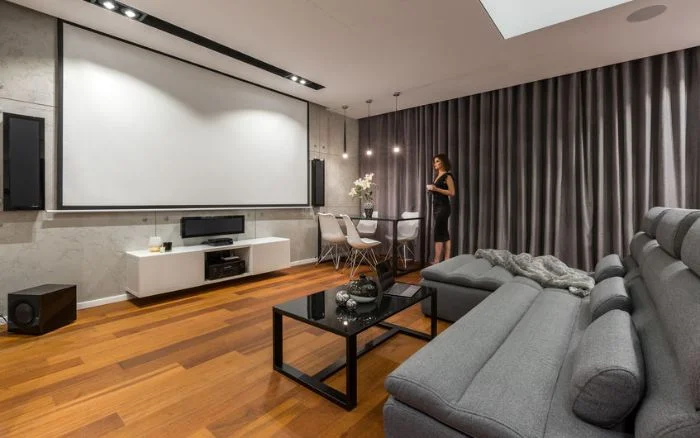
Home entertainment has made a huge impact in the last five years and will continue to grow in the coming time. Global projection screen market can see the transformation. The unforeseen circumstances of 2020 with the COVID 19 pandemic will accelerate the growth of home cinema by years. According to the latest market research report by Technavio, The projection screen market is expected to grow by USD 30.54 billion during 2020-2024. The present cutting edge, powerful performance and futureproof screen technologies have made it possible to drive demand for projection screens. Looking at the current scenario, the demand for home cinema and projection screen will only increase. We’ll guide you through the path-breaking technologies that make projection screens setting in motion.
Ambient Light Rejecting Projection Screens
The use of ALR projection screens is gaining traction in the market as they have several benefits over other screening projection techniques and models. These projection screens help in maintaining a balanced appropriate ratio of brightness and contrast by rejecting the lights coming from unwanted sources such as reflection from floors, windows, and doors. Based on this technology, Lumina has Leor 12 and Leor 17 projection screen series which expands the product portfolio. With the growing adoption of ambient light rejecting (ALR) screens, the market for projection screens is expected to showcase a positive outlook.
Growth of Projections Screens In Nontraditional Sectors
Projection screens are widely used in non-traditional sectors such as education, music events, sports screening, healthcare, and military sectors. The healthcare industry is choosing hospital-wide digitization to minimize costs and improve efficiency. This is encouraging them to install projection screens to facilitate collaboration between surgical teams and healthcare practitioners to obtain the best patient outcomes. Business customers are selecting projection screens in stadiums with the growing popularity of sporting and musical events such as the Olympics, global music concerts, music festivals, national and international cricket matches, and FIFA. Thus, the growing adoption of projector screens in nontraditional sectors will expand the growth of the projector screen market in the future.
HDR and 4K Technology
The next big thing in the projection screen technology has to be HDR and 4K. HDR improves contrast ratio, brightness, and colour depth on your display. HDR technology has improved quality at the pixel level. Individual HDR pixels offer a wider colour space, are brighter when on, and darker when off. The effect is greater detail in the shadows (a.k.a. a higher contrast ratio) and rich life-like colours and a spectacular image. HDR is most often related to 4K projection screens. 4K is the most pixel-dense display technology sold in the consumer sector today. It typically offers about four (4) times as many pixels (3840×2160) as previous HD standards (1920×1080). HDR and 4K is a giant step in the direction of the perfect immersive experience. While viewing 4K content is certainly awesome, you’ll often get more of a ‘wow’ factor in viewing HDR content compared to today’s standard colour range.
The Backstory of Projection Screens
Projection screens and projected images have a far deeper history than cinema does. It might surprise you to find out that projection screens were in use by several travelling showmen in the 1600s, and before that, projection screens of various types captured the projections of camera obscuras, even as far back as prehistoric times. Yes, even cavemen indeed enjoyed what might be described as “home cinema.”
Conclusion
With the latest technology of projector and projection screens, home cinema is just as good as some cinemas. The culture of home entertainment will grow exponentially and will benefit the projector and projection screen market especially given the current world scenario. The growth of OTT will drive the transformation worldwide and will urge the interest in consumers to create a cinematic experience at the comfort of their home.
- Date - May 28, 2020